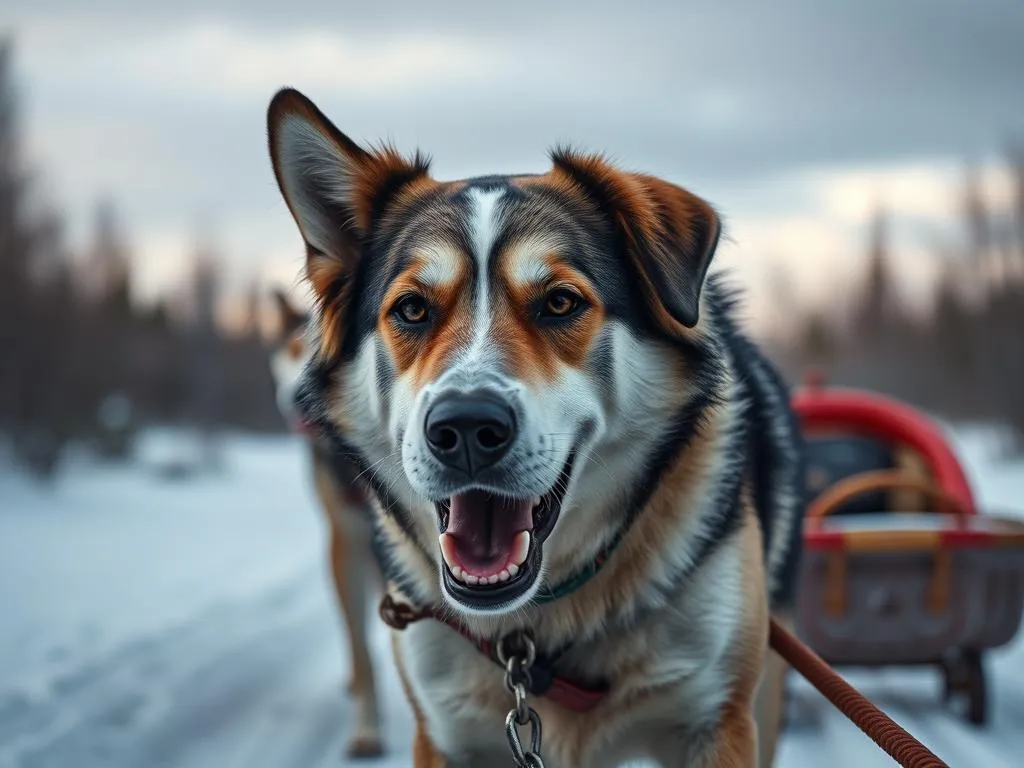
Dog sledding has long been a captivating sport, intertwining the beauty of nature with the bond between humans and dogs. Yet, as this sport garners interest from adventurers and animal lovers alike, questions about animal welfare arise. The central question remains: is dog sledding cruel? In this article, we will explore the history of dog sledding, the role and treatment of sled dogs, arguments for and against the sport, and how we can ensure responsible practices moving forward.
Understanding Dog Sledding
History of Dog Sledding
Dog sledding has roots that stretch back thousands of years, originating in the Arctic regions where Indigenous peoples relied on sled dogs for transportation across vast, snowy landscapes. These dogs were not merely pets; they were essential partners in survival, assisting with hunting and transport. Over time, as technology advanced and the necessity for dog teams decreased, dog sledding transformed into a recreational activity. It became a sport celebrated for its thrill and the unique connection it fosters between mushers and their dogs.
How Dog Sledding Works
At its core, dog sledding involves a sled pulled by a team of dogs, usually harnessed in front of the sled. The equipment includes the sled itself, harnesses for each dog, and lines connecting them to the sled. The musher, or driver, steers the sled while encouraging the dogs to work together as a cohesive unit. Typically, a dog team comprises several dogs, with the number varying based on the type of sledding—racing, recreational, or touring.
The Dogs in Sledding
Breeds Commonly Used for Sledding
Certain breeds are particularly well-suited for sledding due to their physical attributes and temperament. Two of the most popular breeds are the Siberian Husky and the Alaskan Malamute.
- Siberian Huskies are known for their endurance, strength, and friendly nature. They excel in long-distance races.
- Alaskan Malamutes are larger and more powerful, ideal for hauling heavy loads over shorter distances.
Other breeds like the Samoyed and Greenland Dog also have historical ties to sledding due to their ability to thrive in cold climates and their working instincts.
Training and Care of Sled Dogs
Training sled dogs is a comprehensive process that begins from a young age. It incorporates various methods, including positive reinforcement, socialization, and physical conditioning.
- Socialization is crucial for developing a well-adjusted dog, allowing them to interact with other dogs and people.
- Physical conditioning involves regular exercise, often in the form of shorter training runs to build stamina and strength.
Daily care for sled dogs includes a balanced diet, regular health checks, and ample exercise to keep them healthy and engaged. It’s essential to monitor their well-being, ensuring they receive veterinary care when needed.
Arguments for Dog Sledding
Bond Between Dog and Musher
One of the most compelling arguments in favor of dog sledding is the strong bond that develops between the dog and musher. This relationship is rooted in teamwork, communication, and mutual respect. Many mushers recount stories of their dogs’ enthusiasm and joy during training and races. The dogs often display a willingness to work, showcasing their love for running and being part of a team.
Physical and Mental Benefits for Dogs
In addition to the bond formed, dog sledding provides numerous physical and mental benefits for the dogs involved. Regular exercise is vital for a dog’s health, and sledding allows them to engage in vigorous activity that is both stimulating and fun. Many mushers have observed that their dogs exhibit signs of happiness, such as wagging their tails and playful behavior, during and after runs.
Regulations and Standards in the Industry
To address concerns about animal welfare, many organizations have implemented ethical guidelines and regulations within the dog sledding community. Various competitions and tours now adhere to standards that ensure the humane treatment of sled dogs. These include proper care protocols, limits on the number of dogs per team, and mandatory rest periods during long races.
Arguments Against Dog Sledding
Cases of Cruelty and Neglect
Despite regulations, there have been documented instances of cruelty and neglect within the dog sledding industry. Some operations prioritize profit over the well-being of their dogs, leading to poor treatment. Cases of overworking dogs, inadequate living conditions, and improper veterinary care have raised significant concerns among animal rights advocates.
Physical and Emotional Risks
Sled dogs can also face physical and emotional risks associated with the sport. Health issues can arise from the physical strain of racing or training, including musculoskeletal injuries or exhaustion. Additionally, emotional stress can occur if dogs are overworked or not given sufficient rest and recovery time. It is crucial for mushers to monitor their dogs closely to ensure they are not at risk of burnout.
Controversial Practices in the Industry
Certain practices within dog sledding have come under scrutiny. For example, some mushers may chain dogs for extended periods, which can lead to psychological distress and behavioral issues. Furthermore, the competitive nature of sled racing can sometimes result in unethical practices that prioritize winning over the welfare of the dogs.
The Middle Ground: Responsible Sledding Practices
Identifying Ethical Sledding Operations
To support the humane treatment of sled dogs, it is essential to identify and patronize ethical sledding operations. Look for businesses that prioritize the dogs’ welfare by:
- Providing adequate living conditions (spacious, clean, and safe environments).
- Ensuring proper veterinary care and regular health checks.
- Maintaining a balanced workload for the dogs, with ample rest periods.
Alternative Activities for Dog Enthusiasts
For those who love dogs but are concerned about the ethical implications of sledding, several alternative activities can promote well-being without the associated risks:
- Canicross: Running with your dog while they are harnessed to you.
- Bikejoring: Similar to canicross but involves riding a bike while the dog pulls.
- Hiking: Exploring nature trails with your dog on a leash can be a great bonding experience.
These activities provide physical stimulation for dogs while prioritizing their safety and well-being.
Public Perception and Cultural Impact
Media Representation of Dog Sledding
Dog sledding has been portrayed in various films and documentaries, often romanticizing the relationship between mushers and their dogs. While this representation can foster interest in the sport, it can also lead to misconceptions about the treatment of sled dogs. Some productions may not accurately depict the realities faced by dogs in the industry, contributing to polarized opinions.
The Role of Social Media and Advocacy
Social media has become a powerful tool for advocacy, influencing public perception of dog sledding. Campaigns and movements aimed at promoting the welfare of sled dogs have gained traction online, encouraging dialogue about the ethical considerations of the sport. Advocacy groups work tirelessly to raise awareness and push for better regulations and standards in the industry.
Conclusion
In summary, the question of whether dog sledding is cruel is complex and multifaceted. While there are compelling arguments both for and against the sport, the key lies in ensuring responsible practices that prioritize the welfare of sled dogs. By supporting ethical operations and engaging in alternative activities, dog enthusiasts can enjoy their passion for dogs while advocating for their well-being. Ultimately, informed discussions about animal welfare in sports are essential for creating a future where dogs are treated with respect and care.








